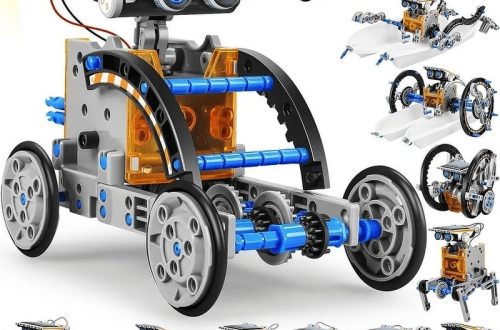Part 1: Advanced Technologies Transforming Quadcopters
Quadcopters have rapidly evolved from simple toys to sophisticated tools with a wide range of applications. As technology advances, we can expect to see even more innovative features and capabilities in future quadcopters. Two key areas of development are artificial intelligence (AI) integration and advanced sensor systems.
Artificial Intelligence Integration
AI is revolutionizing the way quadcopters operate. By incorporating AI algorithms, drones can become more autonomous and intelligent. Some of the key applications of AI in quadcopters include:
Autonomous Flight: AI enables quadcopters to navigate complex environments, avoid obstacles, and land precisely without human intervention. This is particularly useful for applications like delivery, inspection, and surveillance.
Obstacle Avoidance: Advanced AI algorithms can process sensor data in real-time to detect and avoid obstacles, ensuring safe flight even in cluttered environments.
Decision-Making: AI-powered quadcopters can make intelligent decisions based on sensor data and environmental conditions. For example, they can choose the optimal flight path to minimize energy consumption or adapt to changing weather conditions.

Advanced Sensor Systems
The integration of advanced sensor systems is another significant trend in quadcopter technology. These sensors enable drones to gather and process data from the environment, expanding their capabilities and applications. Some of the most common sensor systems used in quadcopters include:
LiDAR Sensors: LiDAR (Light Detection and Ranging) sensors emit laser beams to measure the distance to objects. This technology is used for creating detailed 3D maps of the environment, enabling precise navigation and obstacle avoidance.
Thermal Imaging Cameras: Thermal cameras can detect heat signatures, making them useful for search and rescue operations, firefighting, and security surveillance.
Multispectral Cameras: Multispectral cameras can capture images in different wavelengths of light, providing valuable information for agriculture, forestry, and environmental monitoring.
By combining AI and advanced sensor systems, quadcopters can perform a wide range of tasks with greater precision and efficiency. As technology continues to advance, we can expect to see even more innovative and sophisticated drones emerging in the future. These drones will have the potential to revolutionize industries such as agriculture, construction, logistics, and public safety.
Part 2: Urban Air Mobility and Delivery Solutions
Quadcopters, once a niche hobbyist pursuit, are rapidly evolving into versatile tools with the potential to revolutionize various industries. Two of the most promising applications of quadcopters are aerial commuting and delivery.
Aerial Commuting
The concept of flying cars has long captivated the human imagination. While full-fledged flying cars may still be a distant reality, quadcopters are emerging as a viable solution for short-distance urban air mobility. By leveraging advanced technologies like vertical takeoff and landing (VTOL) capabilities, quadcopters can navigate congested city streets and offer efficient and eco-friendly transportation options.
Several companies are actively developing electric vertical takeoff and landing (eVTOL) vehicles, which are essentially large-scale quadcopters designed to carry passengers. These vehicles have the potential to revolutionize urban transportation by reducing traffic congestion, air pollution, and travel time.

Delivery Drones
The use of drones for delivery services is rapidly gaining traction. Quadcopters, in particular, are well-suited for last-mile delivery, especially in urban areas with dense populations. By utilizing GPS navigation and autonomous flight capabilities, drones can efficiently deliver packages to specific addresses.
Some of the potential benefits of drone delivery include:
Faster Delivery Times: Drones can bypass traffic congestion and deliver packages directly to customers’ doorsteps, significantly reducing delivery times.
Reduced Carbon Footprint: Drone delivery can help reduce carbon emissions by minimizing the need for delivery vehicles.
Improved Efficiency: Autonomous drones can operate 24/7, increasing delivery efficiency and reducing labor costs.
Accessibility to Remote Areas: Drones can deliver essential goods to remote and inaccessible areas, improving access to healthcare, food, and other supplies.
While there are still regulatory hurdles and technical challenges to overcome, the future of drone delivery looks promising. As technology continues to advance, we can expect to see increasingly sophisticated drones capable of handling a wider range of delivery tasks.
Part 3: Environmental and Public Safety Applications
Quadcopters, once a novelty, have rapidly evolved into indispensable tools across various sectors, revolutionizing disaster response and law enforcement strategies. Equipped with advanced technologies such as artificial intelligence, thermal imaging, and robust communication systems, these aerial drones are reshaping the landscape of public safety and emergency services.
Disaster Response and Relief
In the aftermath of natural disasters like earthquakes, hurricanes, and wildfires, rapid assessment and timely intervention are critical to saving lives and mitigating damage. Quadcopters are uniquely suited to this task, offering several key advantages:

Rapid Assessment: Equipped with high-resolution cameras and sensors, these drones can quickly survey large areas, providing real-time data on the extent of damage, identifying critical infrastructure, and locating potential hazards.
Search and Rescue: Thermal imaging cameras enable quadcopters to detect heat signatures, making it easier to locate survivors trapped in rubble or remote areas. AI-powered algorithms can analyze the footage to prioritize search efforts and identify potential survivors.
Delivery of Supplies: In remote or inaccessible regions, drones can deliver essential supplies like food, water, and medical kits to those in need, bypassing damaged infrastructure and logistical challenges.
Communication Relay: Quadcopters can act as aerial communication relays, establishing temporary networks in areas where traditional infrastructure has been compromised. This enables first responders to coordinate efforts and maintain contact with isolated communities.
Law Enforcement and Public Safety
Law enforcement agencies are increasingly adopting quadcopters to enhance their operational capabilities and improve public safety:
Surveillance and Monitoring: Drones equipped with high-resolution cameras can provide aerial surveillance of large areas, such as crowds, protests, or crime scenes. This enables law enforcement to monitor situations remotely, identify potential threats, and deploy resources effectively.
Search and Rescue: In cases of missing persons or hostage situations, quadcopters can quickly scan vast areas, reducing search time and increasing the chances of a successful outcome.
Evidence Collection: Drones can capture aerial footage of accident scenes, crime scenes, and other incidents, providing crucial evidence for investigations.
Emergency Response: During emergencies like active shooter situations or natural disasters, drones can provide real-time information to first responders, helping them assess the situation and plan their response.
As technology continues to advance, the capabilities of quadcopters are expanding, promising even greater potential for disaster response and law enforcement. By harnessing the power of AI, advanced sensors, and autonomous flight, these aerial drones are poised to revolutionize the way we respond to crises and protect our communities.

Part 4: Regulatory and Infrastructure Considerations
As quadcopter technology continues to advance, their integration into urban airspace presents both significant opportunities and complex challenges. To realize the full potential of these aerial vehicles, careful consideration must be given to air traffic management, privacy concerns, and security risks.
Air Traffic Management: A Complex Puzzle
The integration of quadcopters into the existing airspace system demands innovative solutions to ensure safe and efficient operations. Several key challenges must be addressed:
Infrastructure: Traditional air traffic control systems are not designed to handle the sheer volume of small, unmanned aircraft. New infrastructure, such as advanced radar systems and communication networks, will be necessary to track and manage drone traffic.
Air Traffic Control: Developing robust air traffic control systems for drones requires a paradigm shift. These systems must be able to detect, identify, and track drones in real-time, as well as enforce airspace rules and regulations.
Pilot Licensing and Certification: A standardized licensing system for drone pilots is essential. It ensures that operators possess the necessary skills and knowledge to fly safely. Additionally, a certification system is important for responsible drone operation.
Geo-fencing and No-Fly Zones: Implementing geo-fencing technology is crucial. It can restrict drone access to sensitive areas like airports, military bases, and critical infrastructure.
Privacy and Security Concerns
The widespread use of quadcopters raises legitimate concerns about privacy and security. As these devices become more affordable and accessible, it is crucial to address these issues proactively:
Privacy Violations: The ability of drones to capture high-resolution images and videos from the air raises concerns about surveillance and potential privacy breaches. Strict regulations governing the use of drones for surveillance purposes are necessary to protect individual privacy.
Unauthorized Access: The risk of unauthorized drone use, such as for malicious intent or criminal activity, cannot be ignored. Robust security measures, such as drone detection systems and anti-drone technologies, are essential to mitigate these threats.
Data Security: Ensuring the security of data collected by drones is paramount. Encryption and other cybersecurity measures must be implemented to protect sensitive information from cyberattacks and unauthorized access.
By addressing these challenges and implementing appropriate regulations. We can harness the full potential of quadcopters, while mitigating risks to public safety and privacy. As technology continues to evolve, it is imperative to strike a balance between innovation and responsible use of these aerial vehicles.

Part 5: Technological Advancements Shaping the Future
1. Energy Efficiency and Battery Technology:
Innovations in battery technology and energy-efficient propulsion systems are extending quadcopters’ flight endurance, enabling longer missions and enhanced operational capabilities.
2. Connectivity and Communication:
Utilizing advanced communication networks, including 5G, satellite, and IoT connectivity, will empower quadcopters with robust real-time data transmission and remote control capabilities.
Part 6: Ethical and Social Implications
1. Job Displacement and Training:
As quadcopter technology advances, concerns about job displacement and the need for upskilling workers to operate, maintain, and manage these aerial systems will become increasingly important.
2. Environmental Impact and Sustainability:
The proliferation of quadcopters raises questions about their environmental impact, prompting the need to develop sustainable practices and address potential ecological concerns.
This article explores the future of quadcopters, including advanced technologies, innovative applications, regulatory challenges, and ethical considerations, shaping the next frontier of aerial mobility and unmanned systems.





